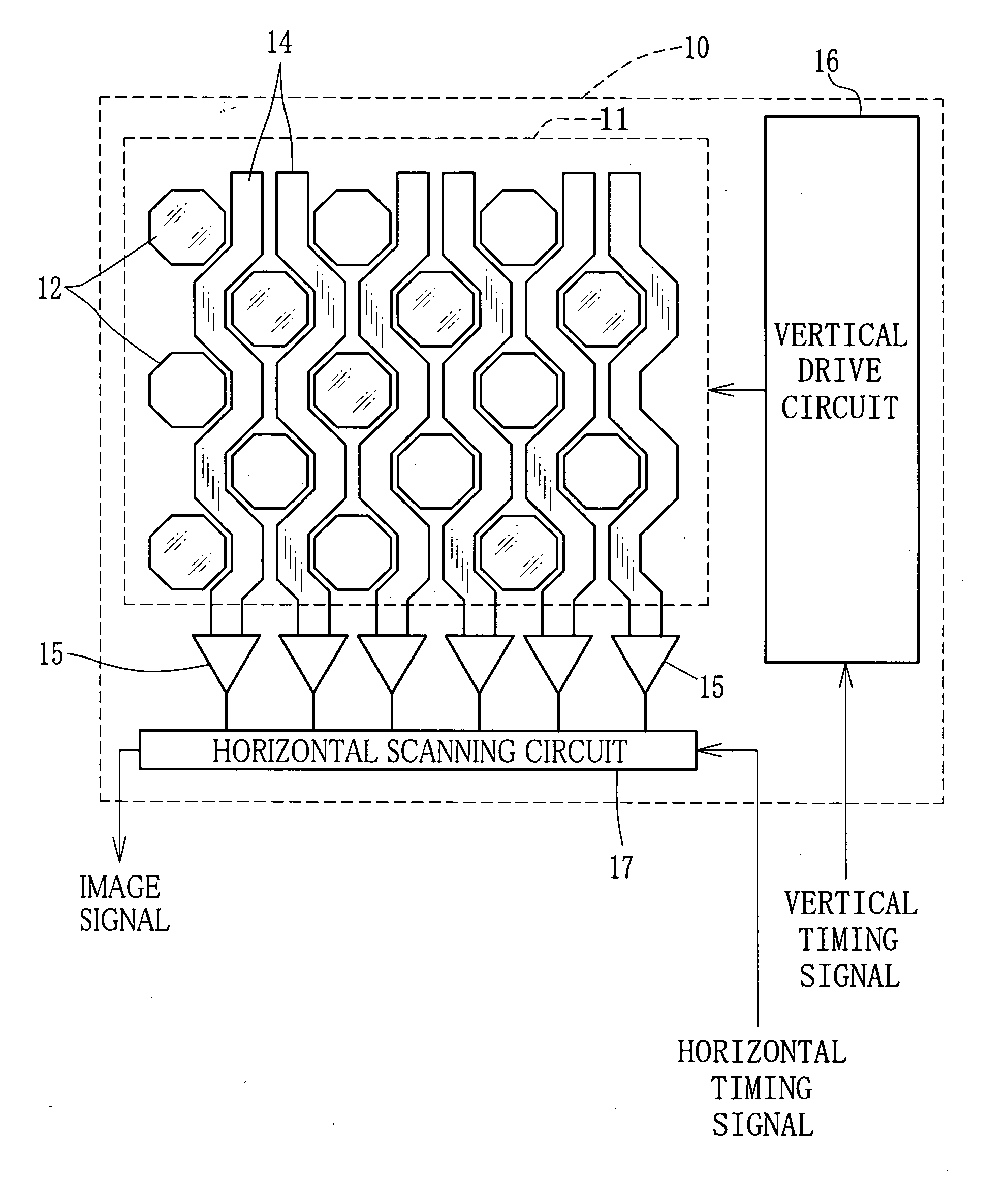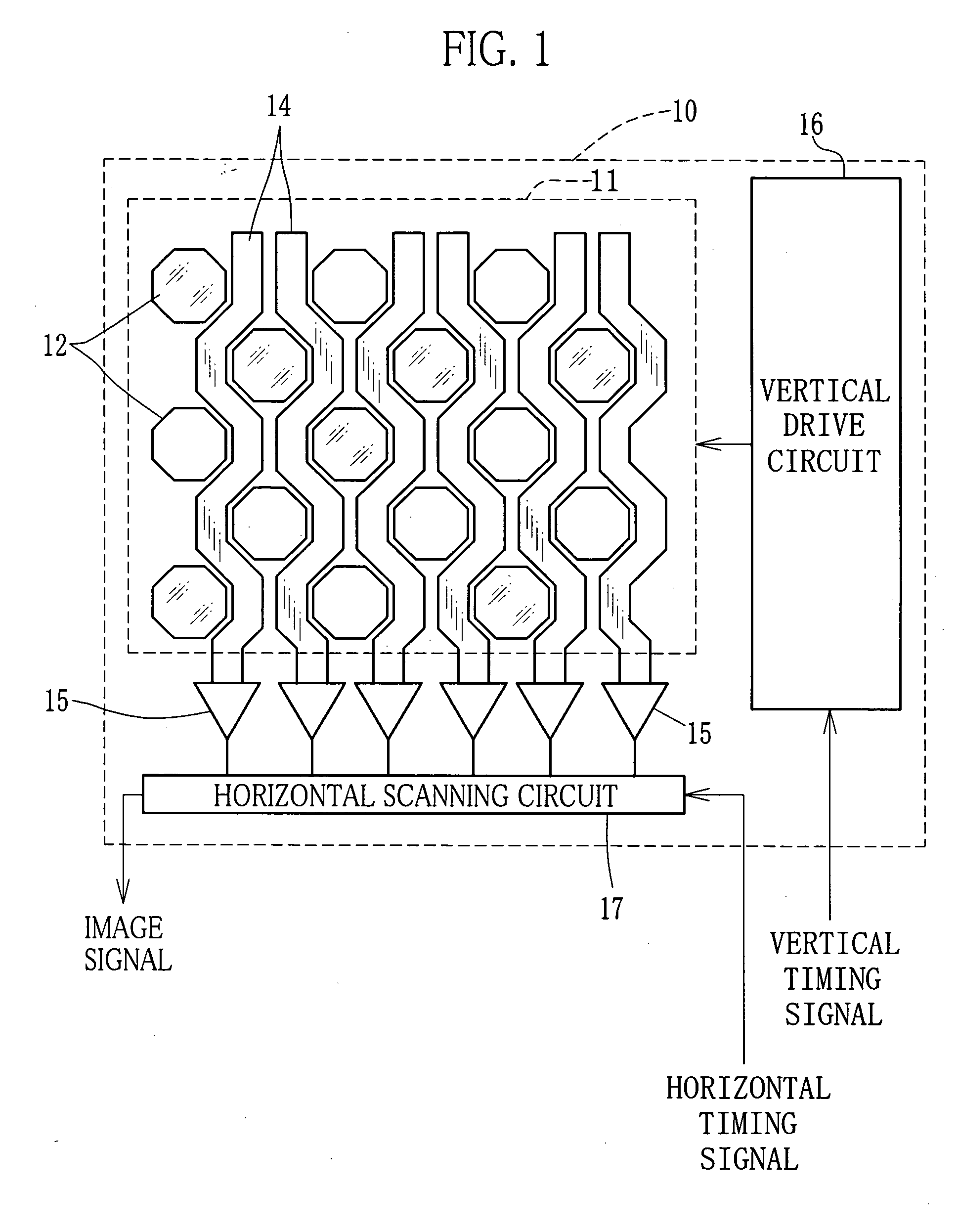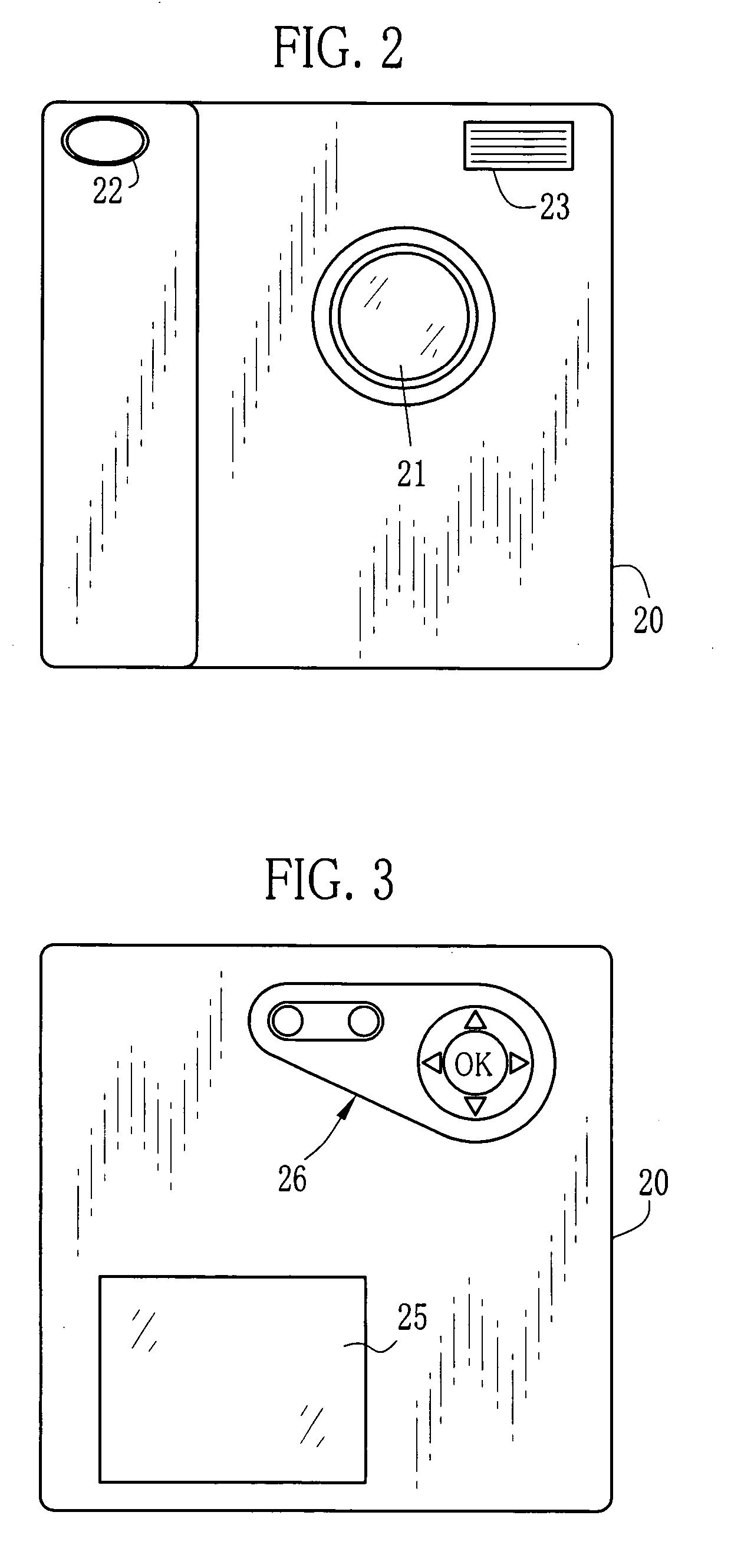Electronic camera having pixel-row thinning mode
a technology of pixel-row thinning and electronic cameras, which is applied in the direction of still video cameras, color signal processing circuits, television systems, etc., can solve the problems of image sensor defect, image quality degradation, image sensor defect, etc., to minimize image defect, minimize image defect, and lighten the burden
- Summary
- Abstract
- Description
- Claims
- Application Information
AI Technical Summary
Benefits of technology
Problems solved by technology
Method used
Image
Examples
Embodiment Construction
[0030]FIG. 1 schematically shows a structure of a CCD image sensor 10 used in an electronic camera according to the present invention. A light receiving surface 11 of the image sensor 10 is provided with a large number of pixels 12. The pixel 12 comprises a photodiode for photoelectrically converting incident light (subject light) and stores a signal charge in accordance with an amount of the incident light. The pixels 12 arranged in a horizontal direction compose a line, and the pixels 12 arranged in a vertical direction compose a row (hereinafter referred to as pixel row).
[0031] In the image sensor 10, the pixels 12 are arranged at constant pitch in the horizontal direction. In this regard, the pixels 12 of the respective lines are horizontally shifted by half the pitch relative to the pixels 12 of the adjacent lines. In other words, the pixels 12 have a honeycomb arrangement. In fact, about six million pixels 12 (about two thousand lines×three thousand rows) are arranged on the ...
PUM
 Login to View More
Login to View More Abstract
Description
Claims
Application Information
 Login to View More
Login to View More - R&D
- Intellectual Property
- Life Sciences
- Materials
- Tech Scout
- Unparalleled Data Quality
- Higher Quality Content
- 60% Fewer Hallucinations
Browse by: Latest US Patents, China's latest patents, Technical Efficacy Thesaurus, Application Domain, Technology Topic, Popular Technical Reports.
© 2025 PatSnap. All rights reserved.Legal|Privacy policy|Modern Slavery Act Transparency Statement|Sitemap|About US| Contact US: help@patsnap.com



